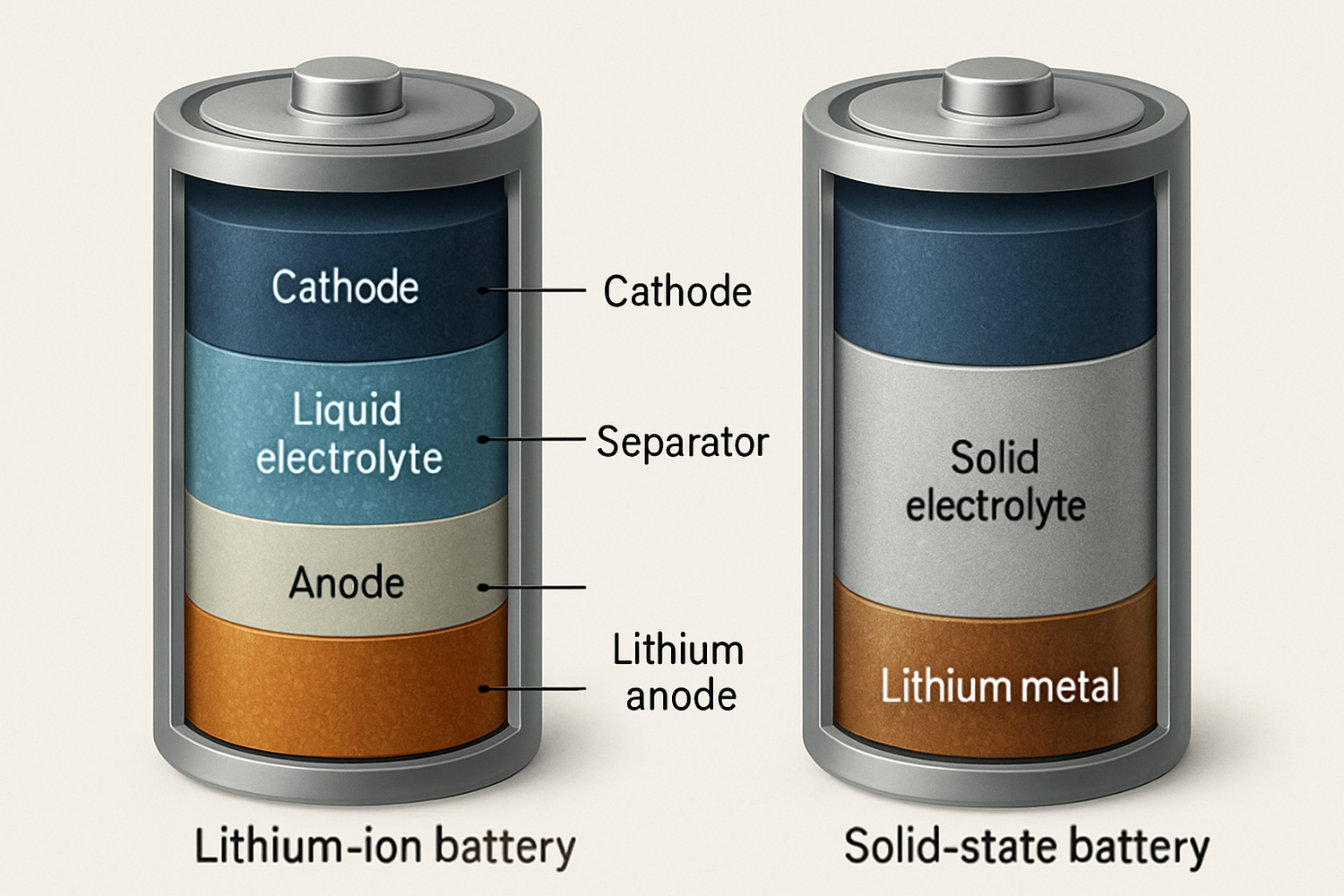The energy storage landscape is in a state of constant evolution. While lithium-ion batteries, particularly lithium iron phosphate (LiFePO4), are the established standard for reliability, a significant shift is underway. Top lithium battery companies and automotive giants are investing billions into a next-generation technology: solid-state batteries. This strategic pivot isn't just about incremental improvements; it's a bet on a fundamental redesign of battery technology that promises to redefine performance, safety, and system design.
Understanding the Limits of Conventional Lithium-Ion
To appreciate the move toward solid-state, it's helpful to recognize the inherent limitations of traditional lithium-ion batteries. These powerhouses have served us well, but they have certain operational ceilings that drive the search for what's next.
The Flammable Electrolyte Problem
Conventional lithium-ion batteries use a liquid or gel electrolyte to facilitate the movement of ions between the cathode and anode. This liquid is typically flammable, creating a risk of thermal runaway if the battery is damaged or overheats. While modern battery management systems and stable chemistries like LiFePO4 have made batteries much safer, the presence of a flammable liquid remains a fundamental concern.
Energy Density Ceilings
Energy density refers to the amount of energy a battery can store for its size and weight. Current lithium-ion technologies are approaching their theoretical limits. This means that to get more energy, you need a larger, heavier battery pack. This physical constraint is a significant challenge for applications ranging from electric vehicles to compact home energy storage systems.
Lifespan and Performance Degradation
All batteries degrade over time with each charge and discharge cycle. Factors like high temperatures can accelerate this process, reducing the battery's capacity and overall lifespan. While today's deep cycle lithium batteries offer thousands of cycles, the industry is always pushing for even greater longevity and durability.
Solid-State Technology: A Fundamental Redesign
Solid-state batteries represent a paradigm shift. They replace the liquid or gel electrolyte with a thin, stable layer of solid material, such as a ceramic or polymer. This single change addresses the core limitations of conventional batteries and unlocks a new level of performance.
Unlocking Superior Safety
By eliminating the flammable liquid electrolyte, solid-state designs drastically reduce the risk of fire and thermal runaway. The solid electrolyte is non-flammable and more stable at higher temperatures, making the batteries inherently safer for use in homes, businesses, and vehicles.
Breaking Through Energy Density Barriers
The solid electrolyte enables the use of a high-capacity lithium metal anode, which is not feasible with liquid electrolytes due to the formation of dendrites that can cause short circuits. This allows solid-state batteries to store significantly more energy in the same amount of space—potentially two to three times more than current technologies. An energy density of 400 Wh/kg or higher is achievable, a substantial leap from the 250-300 Wh/kg of many current lithium-ion cells.
Extending Lifespan and Durability
Solid-state technology promises a longer cycle life and better performance across a wider range of temperatures. The stable solid structure is less prone to the degradation mechanisms that affect liquid electrolytes, potentially leading to batteries that last longer and retain more of their capacity over time.
The Strategic Investments Driving the Transition
The move toward solid-state is backed by substantial financial commitment from both the private and public sectors. Companies are not just experimenting; they are building entire ecosystems to support this next wave of technology.
Securing a Competitive Edge
Leading lithium battery companies and automotive manufacturers are investing heavily to secure a first-mover advantage. They recognize that the first to successfully commercialize a viable solid-state battery will set a new industry standard. According to the International Energy Agency (IEA), innovation in battery technology is crucial for the continued growth of electric mobility and energy storage. The global battery market was valued at approximately $130 billion in 2024, with EVs and energy storage systems driving the vast majority of demand.
Meeting the Demands of Electrification
The global push for electrification requires better batteries. Higher energy density is critical for extending the range of electric vehicles, while enhanced safety is paramount for grid-scale and residential energy storage. Governments are also fueling this transition. The U.S. Department of Energy, for instance, has announced millions in funding to advance domestic solid-state battery manufacturing capabilities, viewing it as a critical component for decarbonizing the grid and transportation sectors.
What This Means for Solar and Home Energy Storage
The advancements in solid-state technology will have a direct and practical impact on residential and commercial solar energy systems. The benefits go beyond simple numbers and translate into tangible improvements for property owners.
More Compact and Powerful Home Batteries
Higher energy density means that a home battery storage system could provide the same amount of energy in a much smaller and lighter package. This frees up valuable space and makes installation easier and more flexible. A 15 kWh battery, which might be a bulky unit today, could become a sleek, wall-mounted device with a minimal footprint.
Enhanced Safety and Peace of Mind
For any system installed in a home, safety is the top priority. The non-flammable nature of solid-state batteries provides an unparalleled level of safety, giving homeowners greater peace of mind. This feature alone is a powerful driver for adoption in residential markets.
Long-Term Value and Performance
A longer lifespan and greater durability mean a better return on investment. Understanding the key metrics of battery health is vital. A detailed analysis of factors like cycle life and depth of discharge, as explained in this ultimate reference on solar storage performance, highlights why a battery that endures more cycles offers superior long-term value.
A Look Ahead: The Road to Mass Adoption
While the promise of solid-state technology is immense, challenges related to manufacturing scale and cost still exist. LiFePO4 batteries remain the proven, reliable, and cost-effective choice for solar energy storage today. However, the massive investments from top lithium battery companies send a clear signal about the future. The transition is not a question of if, but when. The strategic bet on solid-state technology is a commitment to a future powered by safer, smaller, and more powerful energy storage solutions.
Frequently Asked Questions
Are solid-state batteries available now?
Solid-state batteries are currently in limited production and are being tested by automotive and electronics companies. They are not yet widely available for consumer applications like home energy storage. Mass-market availability is anticipated in the coming years as manufacturing processes are refined and scaled.
How much more energy can a solid-state battery hold?
Solid-state batteries have the potential to offer significantly higher energy density, with some estimates suggesting they can store 50% to 100% more energy by volume compared to current lithium-ion batteries. This would allow for much more compact and lightweight energy storage systems.
Will solid-state batteries replace LiFePO4 for solar storage?
In the long term, solid-state technology is positioned to become the successor to current lithium-ion chemistries due to its advantages in safety and energy density. However, LiFePO4 technology is mature, safe, and cost-effective, and it will continue to be a leading choice for solar and home energy storage for many years. The transition will likely be a gradual evolution as solid-state production scales and costs decrease.





Leave a comment
All comments are moderated before being published.
This site is protected by hCaptcha and the hCaptcha Privacy Policy and Terms of Service apply.